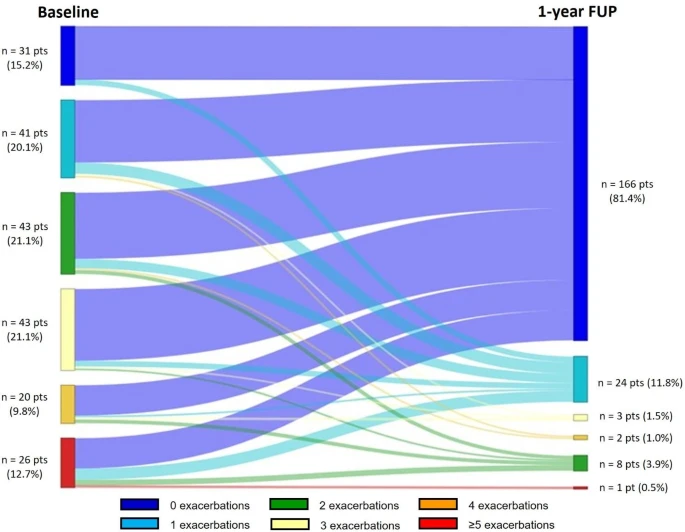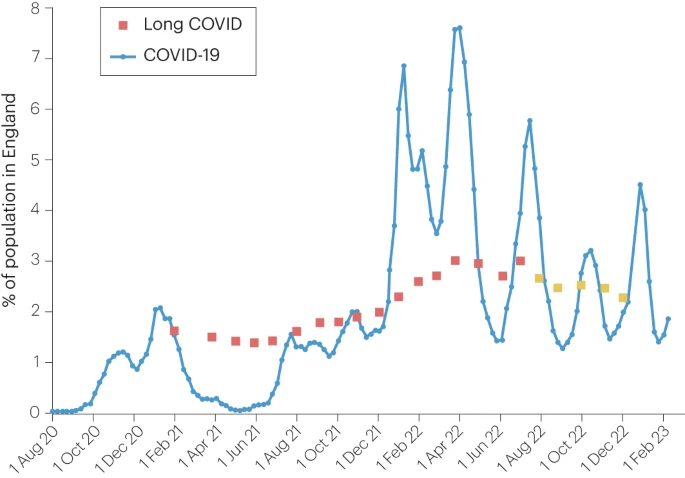Padilla-Galo, A., Moya Carmona, I., Ausín, P. et al. Respir Res 24, 235 (2023). https://doi.org/10.1186/s12931-023-02539-7
Abstract
Background
The ORBE II study aimed to describe the characteristics and clinical outcomes of adult patients with severe eosinophilic asthma (SEA) treated with benralizumab in a real-world setting in Spain.
Methods
ORBE II (NCT04648839) was an observational, retrospective cohort study in adult SEA patients who had been prescribed benralizumab. Demographic and clinical data of 204 SEA patients were collected 12 months prior to benralizumab initiation (baseline) and at follow-up. Exacerbation rate, asthma symptoms, maintenance oral corticosteroid (OCS) use and lung function were evaluated, among other variables.
Results
 |
| Change in the number of exacerbations over 1-year follow-up. |




